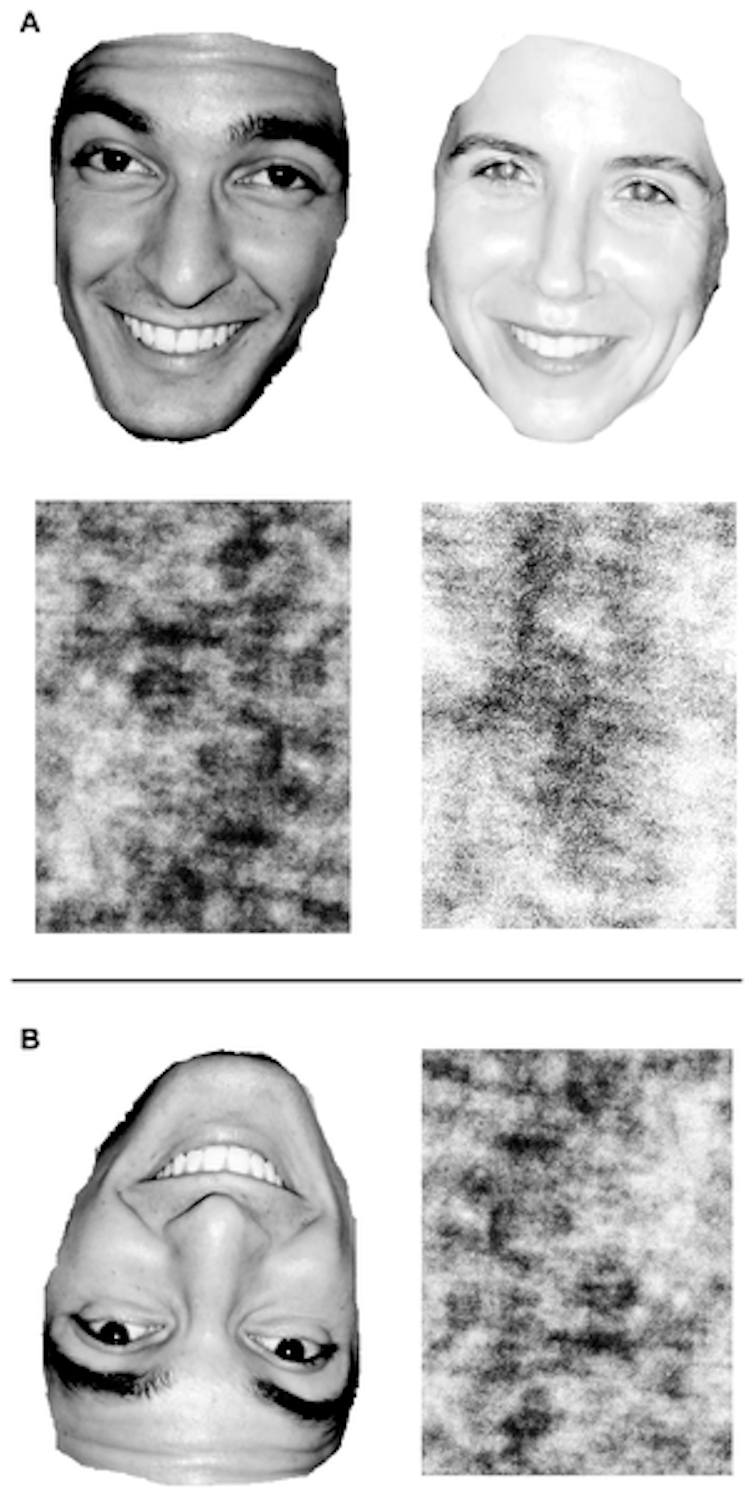In the last few years, several laboratory studies have shown that, to some extent, we can tell whether someone is gay or straight, just by glimpsing their face.
When asked to categorise male and female facial photos as “gay” or “straight”, participants have consistently performed at better than chance (though nowhere near perfect).
And a new study, published today in PLoS One by psychologist Joshua A. Tabak and colleagues, is shedding light on how this “snap judgement” occurs.
Could it be that participants simply pick up on boyish hairstyles, or meticulously manicured facial hair, or flamboyant eyewear choices?
While these might be hints in real-life interactions, any such cues are removed from the photos used in these carefully controlled studies.
Subjects are generally presented with black-and-white images of faces with no adornments or facial hair, and with all head hair chopped out of the picture.
Several studies have even shown that the above-chance performance still holds when participants only see each photo for one-twentieth of a second. That’s literally a click of the fingers!
As mentioned, the PLoS study by Tabak and colleagues focuses on how we make these amazing snap judgements.
Specifically, the researchers set out to discover if we make these judgements using facial features in and of themselves (“featural face processing”) or if we rely on the configuration of those facial features – that is, how the features fit together (“configural face processing”).
To investigate this, they made use of a phenomenon that face-perception researchers discovered some time ago: presenting faces upside-down has little or no effect on processing of featural cues but severely disrupts processing of configural cues.

Tabak and colleagues tested to see if participants could still categorise faces as gay or straight at above chance if those faces were upside down. They also tested to see whether performance is worse when judging faces upside-down vs right-way-up.
For this study, they again used black-and-white facial photos with no adornments or facial hair, with the head hair cut off in Photoshop, and again they presented the photos for only a twentieth of a second.
Remarkably, even when faces were presented upside down, participants still categorised them as gay or straight better than chance. This shows the participants could perceive sexual orientation from featural cues alone.
That said, they did perform somewhat worse with the upside-down faces than the right-way-up faces, showing that the configuration of the faces also helped their judgements.
Interestingly, the researchers found that both men and women judged the sexual orientation of female faces more accurately than that of male faces, both when rating faces right-way-up and upside-down.
This is opposite to what one might expect, given that participants likely have more lifetime exposure to gay men than lesbian women. This is because the prevalence of homosexuality is higher in men than women.
What the authors don’t discuss, and what I find even more interesting than how we can make snap judgements of sexual orientation, is the question of why we have this ability in the first place.
Have we simply formed a learned association between facial characteristics and sexual orientation by repeated exposure to self-identified gay people and certain types of facial characteristics they tend to have (e.g. sex-atypical characteristics)?
Or could we have evolved a mechanism to detect gay people, since those with such a mechanism might have had the evolutionary advantage of wasting less time and effort pursuing reproductively less-fruitful mating options?
Both mechanisms seem reasonably plausible, and both could be true. Perhaps testing participants from cultures with little or no exposure to open homosexuality might shed light on these questions.

